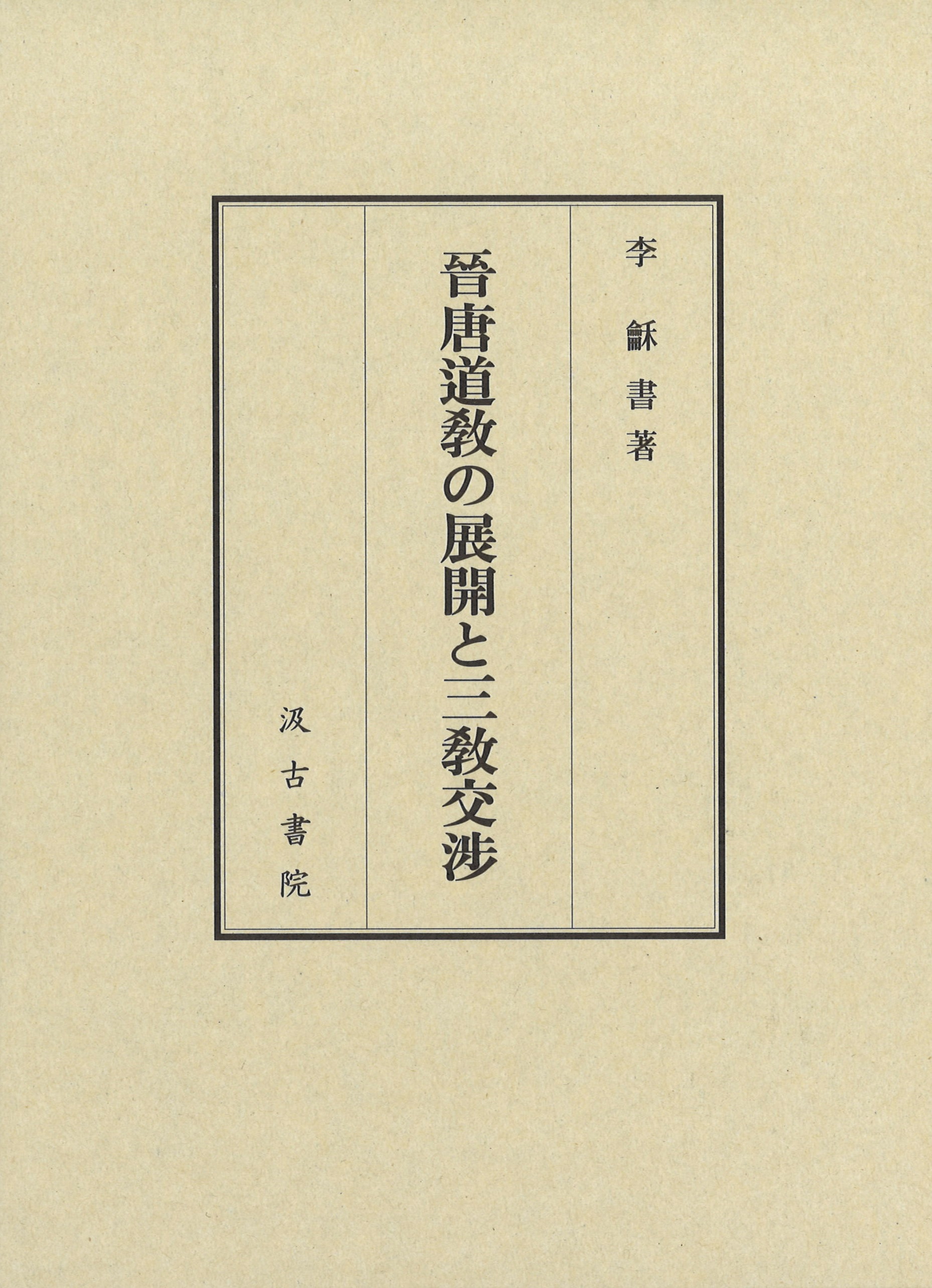
Title
Shintou Doukyou no tenkai to sankyou kousyou (The development of Taoism and interactions between the three teachings in Jin-Tang China)
Size
546pages, A5 format
Language
Japanese
Released
March 30, 2022
ISBN
9784762967115
Published by
Kyuko Syoin
Book Info
See Book Availability at Library
Japanese Page
Today in the twenty-first century, a method for exorcising evil spirits and treating illnesses that involves drinking water containing the ashes of a burnt talisman is performed on a daily basis in the Sinophone sphere. This remedy is in fact considered to have been used by a faith-based group known as the Way of Great Peace that appeared in China in the second century in the final years of the Later Han dynasty. But before the start of the Three Kingdoms period the Way of Great Peace started an insurrection that was soon suppressed, and it quickly disappeared from the stage of history.
Meanwhile, around the same time another religious organization similar to the Way of Great Peace and known as the Way of the Five Pecks of Rice established an independent power base under Zhang Lu, its leader, in Hanzhong in southwest Shaanxi province, and although it subsequently fell to Cao Cao, its rites (including the above method of drinking talismanic water), ideas, and organization developed considerably over several hundred years from the third to tenth centuries while interacting with Confucianism and Buddhism. As a result, it was transformed into “Daoism,” one of the “three teachings” along with Confucianism and Buddhism, and left its mark on history.
This book discusses the integration achieved by the diverse and complex Daoism of this period. In the history of interactions between the three teachings of Daoism, Confucianism, and Buddhism, it focuses primarily on philosophical aspects developed by Daoism in the Jin-Tang period, unravels the various elements that provided their motive force, and uncovers their historical significance. In addition to an introductory chapter, which discusses the aims of this study and prior research, and a concluding chapter, which summarizes the book’s findings and discusses future prospects, this book consists of four chapters on “The Way” and four chapters on “Teachings.”
In the section titled “The Way,” I examine questions about how Daoism at the time understood and developed the “Way” (dao), the crux of its doctrines, with a focus on Daoist thought of the Jin-Tang period. In the section titled “Teachings,” on the other hand, I discuss how Daoism in the Jin-Tang period evolved and developed as “teachings” while preserving its distinctiveness in the course of the historical process of interacting with Confucianism, Buddhism, and imperial authorities. There follows a summary of the eight chapters constituting the core of this book.
Chapter 1 mainly examines the many different definitions of dao and the supreme deity appearing in Daoist scriptures of the Northern and Southern Dynasties and points out how they differ. Chapter 2 reexamines the historical development of chongxuan, or “twofold mystery,” an important concept in Daoism during the Sui and Tang periods, and presents a new view on the date of its emergence. Chapter 3 analyzes the significance, in terms of the history of thought, of the introduction of the idea of emptiness from Buddhist Prajñā studies seen in Daoist scriptures. Chapter 4 clarifies the process whereby Daoism created the Three Purities, a system of beliefs about the supreme deity. Chapter 5 gives examples of inscriptional materials and points to changes in perceptions of the supreme deity of Daoism among intellectuals and in village communities and to moves towards inner consistency within Daoism. Chapters 6 and 7 examine the types of Buddhist criticism of Daoism and changes in Buddhist understanding of Daoist thought to be seen in the Hongming ji and Guang hongming ji. Chapter 8 undertakes a diachronic examination of actual interactions between Confucianism and Daoism with reference to religious rites.
Lastly, I wish to take the liberty of noting the academic significance of this book. In the past, there has been a strong tendency for research on the formation of Daoism to trace the evolution of the constituent elements of Daoism, and it has been difficult to gain a picture of Daoism as a whole. Unshackled by this past style of research, this book considers various aspects of the formation of Daoism and its philosophical development in the context of the history of interactions between the three teachings of Confucianism, Daoism, and Buddhism. In addition, it places importance on the use of new sources such as records of the production of statues and Dunhuang documents and on meticulous textual criticism, thereby making it possible to analyze various aspects of the development of Daoism and philosophical interactions with Confucianism and Buddhism. These points could be said to be of great significance in the history of research.
(Written by: LI Heshu / August 22, 2022)
Related Info
The 2nd UTokyo Jiritsu Award for Early Career Academics (The University of Tokyo 2021)
https://www.u-tokyo.ac.jp/ja/research/systems-data/n03_kankojosei.html



